Corey Stevens Bio
Corey was born August 6, 1954 in Centralia,
Illinois, a small town just like the one in the John Mellencamp
song.
Rolling Stones on tour. 1972 
Corey received his first guitar on August 26, 1965 and it looked like this Stella. c.1950-60 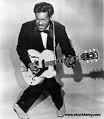
Corey's earliest influence, Chuck Berry was from St. Louis. 1958 
The Cleavers 1950's 
The Beatles led the British Invasion in the 1960's. 
Ike and Tina Turner in the early 1970's. 
Corey with his first Strat. 1975 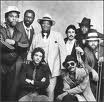
Big Twist & the Mellow Fellows. Corey's favorite band in college. Altgeld Hall, the music building at SIU Carbondale where Corey graduated in 1978 with a degree in music. 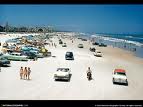
Daytona Beach, Florida 
Hollywood, California 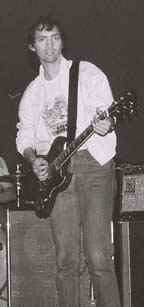
In early 80's with Gibson SG. 1983 
Corey was a school teacher for the Los Angeles Unified School District from 1986 to 1995. 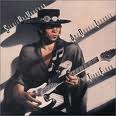
Stevie Ray Vaughan 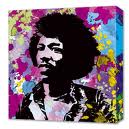
Jimi Hendrix 
Freddie King 
Albert King 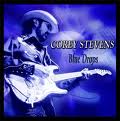
Blue Drops of Rain 1994 Corey released "Blue Drops of Rain" in 1994. An indie label signed Corey and re-released the album in 1995. 
Edward Tree, on left, produced Corey's first two albums. 
Corey's "guide" & guitar tech The Chief. 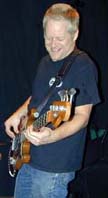
Will MacGregor played bass on "Blue Drops of Rain," "Road to Zen," & "Bring On the Blues" 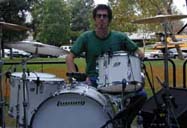
Dave Salinas played drums on " Blue Drops of Rain & "Bring On the Blues" Corey toured 7 months in 1996 and 9 months in 1997. That's 16 out 24 months in 2 years. He played in 46 states. He had 4 different bass players, 2 different drummers, and 6 different road managers. The last leg of the tour, beginning in the fall of 1997, he toured in a tour bus. The rest of the time he toured in van pulling a U-Haul trailer. In 1996, he packed his clothes in a closet (see below) that his first tour manager called the "drama closet" because it was always coming apart. 
Road To Zen 1997 
Allman Bros. Corey wrote "The Brothers" about Gregg and Duane Allman and hoped Gregg would record it. Many people thought the song was for Stevie Ray Vaughan and Jimmie Vaughan. 
In 1998, Corey toured in a Prevost Bus & had his own closet. 1998 
Lynyrd Skynyrd 1997 Getaway 1999 "Getaway" was a contract filler that was comprised of early demos. It completed a three record commitment with Eureka Records. After the settlement, Corey released it as "Mean and Lean," showcasing his dog, Romeo, and making a tongue-in-cheek statement that the CD was a dog. 
Mike Finnigan played organ on "Blue Drops of Rain," "Road to Zen," & "Getaway" 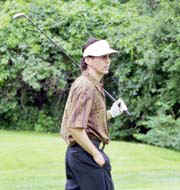
Playing golf in the Dayton's Challenge in St. Louis Park, MN. 2000 Mean And Lean 2003 
On tour. 2002 
Road To Zen Tour DVD 2002 
Bring On the Blues was Corey's first studio recording of new material since 1997 with Road To Zen. 2003 
Danny Grenier played guitar on "Blue Drops of Rain," "Getaway," and "Bring On the Blues" 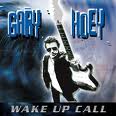
Gary Hoey was writing this song when he engineered Corey's fourth album. 
Canned Heat 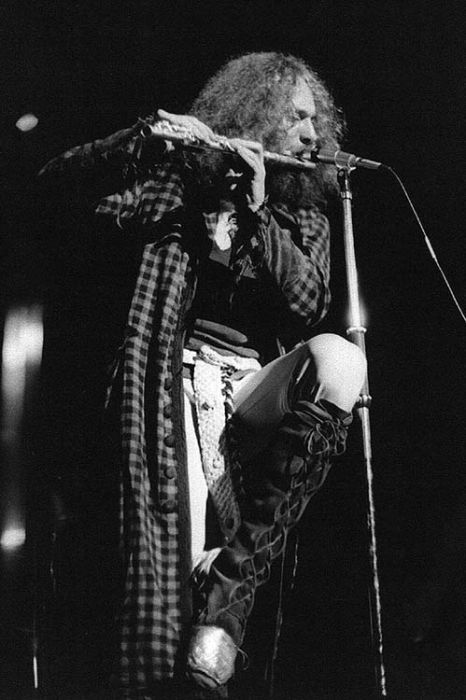
Ian Anderson 
With Martin guitar at a TV appearance during the "Bring On the Blues" promo tour at a TV station in St. Louis 2003 
With Otis Hayes & Will MacGregor taking a breakfrom a rehearsal. 2003 
The Last DJ, Jim Ladd. 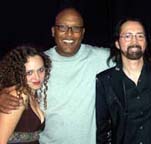
Albertville featured Corey's daughter, Kori Lynn Stevens, on bass and keyboards (left) & Tom Petty Heartbreaker, Steve Ferrone, (center) on drums.Corey smiling on right after a show in L.A. 2006 
Corey and band. Mark Johnson, Paul Testa, Norm Steffen, Corey, and Jim Stark. 2006 
Albertville 2007 Albertville resisted the obvious. No Flying V guitars. Just Albert King deep tracks. 
Albertville disc. 2007 
Live at the Myth 2007 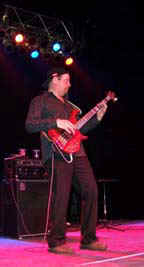
Mark Johnson played bass on Myth Live. 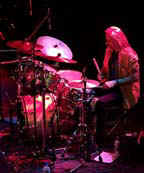
Norm Steffen played drums on Myth Live. 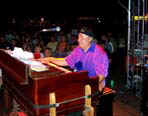
Paul Testa on B-3 played on Albertville, Myth Live & The Dreaming Man 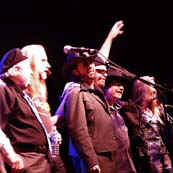
Band takes bow at the Myth. Paul Testa, Norm Steffen, Corey, Mark Johnson, Jim Stark & Melody Gilbert. 2007 
Linda Stevens' album featured Corey & Gary Hoey on lead guitar. Kori Lynn Stevens did the artwork for the album cover. 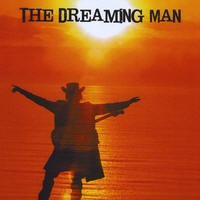
The Dreaming Man, August 2010 
Corey continues to travel to bring his music to fans. 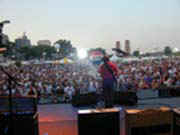
|
Born in the small town of Centralia, Illinois, Corey Stevens never just says he is from Illinois. After hearing, "Oh, from Chicago?" a few too many times, he has learned the succinct way to put it: "I'm from Southern Illinois - an hour east of St. Louis." St. Louis is where he saw his first baseball game and where he saw the Rolling Stones twice on the same day. He says, "St. Louis is where I went to and saw the huge crowds and came home with big dreams."
But, Centralia was where he grew up, diligently honing his guitar playing and soaking up middle America. "My grandfather put my first guitar in my hands and the story has become well known," says Stevens, referring to the liner notes of his second album, "Road To Zen." He continues, "But, the rest of the story is just growing up in a small town. I really liked it. All my friends complained of how boring it was, but, hey, it was where I was, and I made the most of it." Corey Stevens is a guy who likes to consider all the angles. Although his earliest influences were early rock and rollers like Chuck Berry, comics who played with words to make people laugh had a huge impact on him. When the British Invasion swept Stevens away like millions of others, the words moved him as much as the music. It may be for this reason that Stevens aspired to be a songwriter and not just another guitar player. Stevens grew up in a tight knit family with two older sisters. He was the youngest child and only son of parents a high school girlfriend once labeled "Leave It To Beaver parents." He says, "No matter how much I rebelled, and I raised a lot of hell, I always felt a connection with my family." Thanks to his sisters who were listening to Rock and Roll, Stevens grew up presuming music was one of life's necessities. He would soon find that simple insight to be his calling. Stevens coasted through grade school and high school, making passing grades and not really showing any exceptional talent. "I was no prodigy by any means," he says of his childhood days. "I just drifted from one fantasy to the next. One minute I wanted to be a professional baseball player then I guess I got the music bug. The Beatles came along followed by the Rolling Stones and that was it! The dream or goal just got redefined, but it hasn't changed since I was a teenager." Stevens still remembers the moment when his life changed forever. In the early seventies, he jumped in his friend's car with three buddies and headed to Evansville, Indiana for a music weekend at a minor league ballpark. He remembers, "It was late in the afternoon and bands had been playing all day. The set change came and the announcer brought on Ike and Tina Turner. Ike and the band started playing some cookin' music without Tina, then the stage was completely covered in smoke. Suddenly, Tina and her back up singers appeared dancing out of the smoke! I said to myself this is what I want to do for a living. It was truly an epiphany! " From that day on, Stevens ignored the odds and pursued the dream. He knew he had a long road, but he believed in a transformation that only time could unveil. After graduating from Centralia High School, Stevens enrolled in college and decided on music as his major. In 1974, Stevens left home and moved to Carbondale, Illinois to attend Southern Illinois University. Stevens studied classical music and began an intense four year study of classical guitar. Stevens remembers, "I learned discipline and practiced two, three, four hours a day. I was a serious music student, but I still partied on the weekends and heard bands on the strip. Shawn Colvin was a local and played a lot. She was great! I also spent many nights listening to Big Twist and the Mellow Fellows. That band was great, too! I use to think all I got out of college was the beer and the blues in the bars. But, over the last few years I have begun to realize that the discipline and the music theory helped shape who I am now." Stevens left Carbondale with a B.A. in Music, but had little faith that classical music loomed in his future. Daytona Beach, Florida was Stevens' next pit stop. He went on a vacation and decided to stay. Stevens recalls, "Coming from the Midwest, Daytona was a paradise, but staying there would have meant giving up on my dream. There was never really a choice. I had to move to Los Angeles even though I knew it would be a dogfight and no one thought I would make a dent." In 1980, Stevens drove cross-country from Florida to California. He reached Hollywood with a mission and started meeting other musicians. He sums up his first days in Tinsel Town, "One afternoon, I was having a few drinks with my girlfriend and two musicians that I met in a bar called Filthy McNasty's. They were telling me all the ins and outs, where to find auditions, the clubs, the behind-the-scenes, and I thought I was really getting my orientation into the Music Business. Suddenly, one of the guys got up and said he had to go to his day job at the 7-11. I had never heard the expression day job, but I got the gist of it... before you make it you still have to pay the bills." Stevens played in original bands and grew restless being a sideman. He worked on songwriting and played in a few cover bands for fun. He had developed a bad taste for the Hollywood club scene that he viewed as a misguided preoccupation with impressing the record companies and management firms. He says, "It was just such an uptight scene. I didn't last long. I didn't give up on my dream or the music industry, I just thought I had all the time in the world and regrouped." Eventually, Stevens would have two day jobs that not only paid the bills, but also put him on the path to success. First, he worked as a messenger and learned the lay of the land. The messenger job showed him enough of the industry to see how difficult it is to break in and how tight a click Hollywood can be. Stevens, not one to give up, made a plan. He realized that the messenger job had to go. He needed money to build a small four-track studio, buy equipment, and when he was ready, make 24 track demos. In the midst of hatching his musical career, an LA Times headline cried out to him. There was a teacher shortage and Stevens was looking for a job to back his career. Soon, he quit the messenger job and became a third grade school teacher for the Los Angeles Unified School District. He says, "I don't want anyone to think I gave up on music and became a school teacher. I taught school, but I also practiced guitar, I wrote songs, and played gigs on the weekends. I was still a musician at heart, but I learned a lot being a teacher. The kids were a good influence on me. They are so honest and full of hope." The plan began to materialize in the late 1980's when Stevens' songwriting started to flourish. Living in a one bedroom apartment, he set up a four-track studio in a walk-in closet and began to sharpen his craft. He wrote "Blue Drops of Rain" and "Lessons of Love" and started getting interest from record companies. He dedicated himself to becoming the best songwriter he could be while juggling the teaching career and raising his daughter born in 1988. He started his own original band and used his teaching salary to pay for rehearsal halls and demos. Eventually the band showcased Stevens' original material in Hollywood and just as before, Stevens quickly grew frustrated. He sums it up, "We did a show at what is now the infamous Viper Room which was the Central then. We called our friends, had about forty or fifty show up. But, when I called the club booker a few days later, I was Corey who? I read the writing on the wall AGAIN... the Hollywood scene was just not for me." Stevens amended his master plan. He dove into guitar playing with the same passion he had approached songwriting. He turned his songwriting studio into a guitar workshop and threw himself into learning blues guitar. He remembers, "When I regrouped and got into guitar, I turned my back on the music business and songwriting. I had written a batch of songs that I thought were valid and compelling, but the record companies passed. I had written "Take It Back," "My Neighborhood," and "Blue Drops of Rain." Those three songs ended up on the radio in the nineties. At the time, I just thought I could keep writing songs, but for who?" As Stevens focused on guitar playing, the spirit of Robert Johnson invaded his thoughts. He wondered if he could disappear and reappear a "player," a master of the blues guitar. He woodshedded the guitar with a renewed passion for making music, forgetting the superficial music industry and even his own songs for a moment in time. After months of hibernation from the stage, he got the urge to play out and began sitting in with bands. Using the E flat tuning of Stevie Ray Vaughan, Jimi Hendrix and others before him, Stevens found himself in awkward keys, but used the challenge to sharpen his skills even further. Soon, Stevens was ready to start another band and another journey. He did not know it, but his plan was coming together, even if he thought he had stopped trying. He started a band called Texas Flood and limited the playlist to Vaughan, Hendrix, Albert King, Freddie King, Buddy Guy and Muddy Waters. By 1994, the band evolved into Stevens on guitars and vocals, Will MacGregor on bass and Dave Salinas on drums. Early in the year, Stevens, using his own money, placed a bet on the band and bankrolled an album that would become a classic, "Blue Drops of Rain." The album captured a fleeting moment in time when Stevens, MacGregor, and Salinas would walk on stage in a small, smoky bar and entertain a riveted crowd with songs like "Lenny," "Crosscut Saw," or "Back In Time." Ed Tree's producing and Stevens' originals would be the wild cards that proved to be aces. Stevens brought a number of songs to the sessions that the band had not been performing live that were perfect for the project. "The Brothers," written about Gregg and Duane Allman was an instant fan favorite. But, the title track proved to be the compelling moment in the album showcasing Stevens' bourbon drenched vocals, songwriting prowess and guitar hero chops. The years of hard work had finally yielded a complex exhibition of influences, in sound and lyrical use. Even a sense of humor popped up in Stevens' choice of the Gary Tanner song, "Headshrinker." To Stevens who had lived through the trials and tribulations of trying to make his mark in Hollywood, it sounded like he was rejoicing that he had kept it all together and had not lost his mind. Eureka Records, an independent label, signed Stevens in 1995 and released "Blue Drop of Rain." Although the year was not a huge success, Stevens saw the writing on the wall and in December quit teaching and said goodbye to his day job. In 1996, he toured seven months and made a video for the song, "Blue Drop of Rain," which climbed the radio charts. The album was re-released on the independent label and Discovery Records and made the debut Billboard Blues chart. In 1997, Stevens recorded his second album that yielded a top ten radio hit and video, "One More Time." Other songs made it on the radio and Stevens hit the road in support. By the end of the year, Stevens had toured nine months, including a summer tour with Paul Rodgers and Lynyrd Skynyrd, and shared the stage with ZZ Top. The title track, "Road To Zen," a heartfelt behind the scenes account of life on the road seemed to sum up Stevens' new life. In 1998, Stevens intended to take some time off to write, but ended up back on tour. Hitting the road in style, Stevens and his band finally got their dream ride, a Prevost tour bus. They played dates in the South and Midwest, setting the stage on fire just like the days in the small bars. While on tour, Stevens bought a house in Los Angeles. Returning home to California, Stevens experienced a brief interim of normality and reconnected with his family after nearly two and a half years of vans, airports, tour buses, green rooms and hotel rooms. The bus that picked him up early in the year now let him off at a new home in the Hollywood Hills. The four-track studio was no longer in the walk-in closet. In 1999, Stevens continued to write songs at home in Los Angeles. But, his radio success had left a wave of curious fans eager to hear if he was the real deal. His loyal fans had experienced his shows and word of mouth spread. He developed a reputation for captivating an audience and performing his songs better than the records. Unable to stay home too long, Stevens maintained a busy touring schedule, but still managed to release his third album, "Getaway." Stevens included a treasure in the song, "This Train," which never made it to radio, but should have. Stevens continues to tour, but says, "The last two years have been about getting back to being home for a change and being a normal guy. I spent so many years inside writing songs, inside on the phone, inside classrooms, inside hotel rooms, inside a van or a bus that I just needed a change. I escaped into golf, gardening, and my Tiki bar on my roof overlooking Hollywood. I just needed to be outside. I even bought a convertible. In 2002, Stevens reacquired ownership of his first 3 albums and his publishing in a settlement. Stevens then released a DVD of a live concert shot in 1997 entitled "Road To Zen Tour." In 2003, Stevens released his fourth studio album, "Bring On The Blues," on Fuel 2000 distributed by Universal. Stevens started the album at Sonora Recorders and completed it at Gary Hoey's studios where he worked closely with Hoey to craft his best record to date. The album combined the contemporary blues concept of his first album, "Blue Drops of Rain," with the classic rock of his second album, "Road to Zen," that showcased an affirmation of Stevens' original style and strong songwriting skills. The song, "Getaway," was reworked with Canned Heat backing Stevens in the studio. In September 2003, Stevens sat in with rock icon, Ian Anderson, from Jethro Tull, at the Anson Ford Theater in Hollywood during Anderson's solo tour. During the show, Jim Ladd, the infamous "Last DJ" from KLOS interviewed the two. Stevens was thrilled to be on the stage. Jethro Tull was his entry into the concert world. Stevens tells the story, " When I was sixteen, I drove to St. Louis, to my first big concert which was Jethro Tull at the Kiel Auditorium. They went on late like 11:20. I had to leave at midnight because I was already past my curfew. I asked Ian about it. I told him that fans ask me all the time about concerts that I can't remember as the set up, and then told him about my first concert. It was funny. When I asked him why they went on so late - he couldn't remember!" Stevens continued touring to pay the bills throughout the year and into 2004. Radio changed and new music was overshadowed by music from the 60's and 70's making it more difficult for an artist like Stevens to reach a new audience. But, he had laid enough groundwork that he could tour and his agent says he never turned down a legitimate offer to perform. In early 2005, Stevens returned to the studio for an album that was a departure from the electric blues-rock template he had followed for ten years. " Alone At Last" was released in July 2005 and demonstrated a different side of Stevens. Stevens says, "Alone At Last was the first album I made that I played all the instruments and did exactly as I wanted. Left to my own devices I did pretty well. I learned a lot about the studio because I made all the decisions and had time to think things through and explore new boundaries. I set my own deadline and stuck to it. It was great to make a record like that and stand behind it. It was as if the limitations were the core theme of the album. Every musician wants to make this masterpiece record like Layla, for example, with a lot of tracks, but going in the opposite direction was very fulfilling. In fact, the sparsest song, "Last Temptation," just a vocal and an acoustic guitar is probably the defining moment on the record. Having a lot going on is great, but sometimes less is better and more honest. Not many songs can hold up to one vocal and one guitar." Stevens got good feedback from fans about the acoustic album and says, "If my fans can follow me on my path and let me try new things, I am a happy man. I can't make the same album over and over. If I change too much and fans don't like it, I can understand. I try to write quality songs and the rest takes care of itself." In 2006, the change came from something other than songwriting. The idea to make an album of Albert King covers had sat on the back burner for a few years and moved to the front burner thanks to a new record deal with Ruf Records. President Thomas Ruf approached Stevens about a new record saying he really liked the songs, "Crosscut Saw" and "I'll Play the Blues For You" from Stevens' first record, "Blue Drops of Rain". Stevens had already decided to make his next record a collection of Albert King covers and had a name, "Albertville." Stevens sums it up, "It was too good to be true. Ruf Records came knocking and said they liked the Albert King covers. I was already in pre-production to make an album of King covers. It was a great coincidence. Great when it works, isn't it?" Although the album wasn't released in 2006, the recording process consumed Stevens. He got the contract in July, but had to leave for a brief tour. He started the album on August 1st and finished it November 30th. He had obligations to perform a few shows every month, so he worked every day he wasn't on the road, recording horns and organ in Minneapolis on a day off. Stevens says, "I had a feeling if I worked 5 days a week I would regret it when the end of November deadline rolled around, so I worked 7 days a week most weeks. Stevens says he once dreamed about Albert King and the work ethic. Stevens recalls, "I had a dream back in the early nineties when Albert was still alive. I dreamed that I asked him for advice. I told him I was working really hard and my guitar playing wasn't progressing to my satisfaction. Albert said I was over doing it. He held out his hand and made a 5. He said 5 days a week was the most he ever played. Stevens got to meet King at a show in Santa Monica, CA. Stevens remembers, "I shook Albert King's hand. It was a big moment in my life. That night he played a 4 song encore that has never been topped!" Stevens had the prospect of a new record label to push his new album, " Albertville," that hit the stores in February 2007. Stevens muses optimistically, "Being a musician is up and down. There are a lot of good and bad breaks out there for all musicians. I prefer to think I'm lucky and always have. Hey, Steve Ferrone played drums on my new album. I know the music business is constantly changing. Radio ignores new artists for the most part. Copying a CD is a no-brainer. But, there really are a lot of positive things going on. I have a band that inspires me every night I walk on stage. I still meet music fanatics who have the same passion I have for music. I continue to meet new fans at my shows who are there for the first time. A lot of musicians are frustrated and bitter, but I think they have more to be grateful for than they realize." That sums up Stevens, the guy who moves forward primarily by self-motivation. He does what he does because he has something to say and doesn't question why - just how and when. "Albertville" became available on February 16, 2007, the same day that Stevens performed at the Myth, a new state of the art venue in Maplewood, MN, a few miles north of St. Paul. The show was recorded and filmed for a DVD, but unhappy with the video, Stevens chose to release it as a live two-CD package. "Myth Live" debuted on January 18, 2008. The double album showcased Stevens band and his catalog of well written contemporary blues songs. Stevens reflects on "Myth Live," "I toured a lot in 2007 and didn't really start working on mixing the Myth show until September. I was busy traveling and playing music until the third week of September and that's when I started my full blown obsessive compulsive work ethic of tackling the Myth mixes. It was recorded in Pro Tools as one long session, almost two hours long. It was quite unusual. For example, unlike mixing one song at a time, anything I did to EQ a track effected that instrument for all the songs. I also had two crowd mikes that I could blend in to the mix at times. The end of "It's Over" includes the crowd mikes and is probably my favorite because it sounds so live. I learned a lot just from an analytical perspective. Anyone who wants to be a musician should spend a lot of time listening to their live shows. Good and bad things are revealed. I learned that the moments that I really "felt it," were the best moments. And it surprised me because I work on technique so much and it turns out that emotion really does matter, maybe more." Sun Country Airlines approached Stevens in 2008 to use his music on in flight programming and a limited edition CD featuring Twin Cities bands. Stevens lived in Los Angeles, but his band was based in St. Paul, so he gave them "Myth Live" to play on flights and appeared in concert at selective Sun Country events. In August 2010, Stevens released his 8th album, "The Dreaming Man." He wrote the title track for his friend, Boon Miller, an artist and musician, who co-wrote "Triple Jack," from the "Bring On The Blues" CD, with Stevens. The actual disc features Miller's art. Stevens remembers, "I wrote The Dreaming Man the day Boon died. It was a weird situation. He died of complications from diabetes. He knew he was going to die. We all knew. I talked to him on the phone the day before he died and we had a great conversation. We talked about the music he loved like Hendrix. But, it was eerie even though he was upbeat. The next day he was gone and the song wrote itself." Steve Ferrone returned on drums. Stevens' daughter, Kori Lynn, played keyboards, sang vocal harmonies and did the artwork including the photography. Paul Testa returned at the Hammond organ. Stevens played bass, guitar, as well as producing the project. "The Dreaming Man" features twelve new songs written by Stevens. Stevens continues to tour with his band and as a solo acoustic performer. His music is played on XM Radio and some FM stations, and is available on iTunes, CD Baby, and in selected stores. ~ Bio by J.Cortez ~ |











 Corey Stevens
Corey Stevens